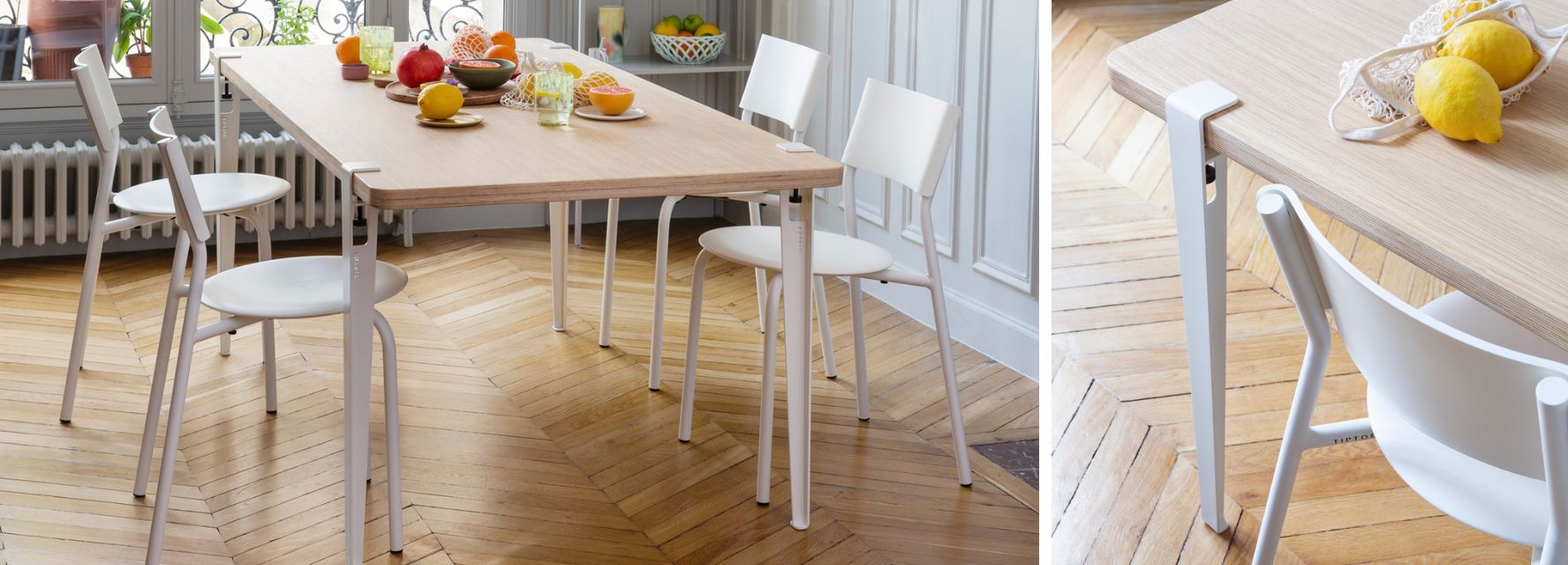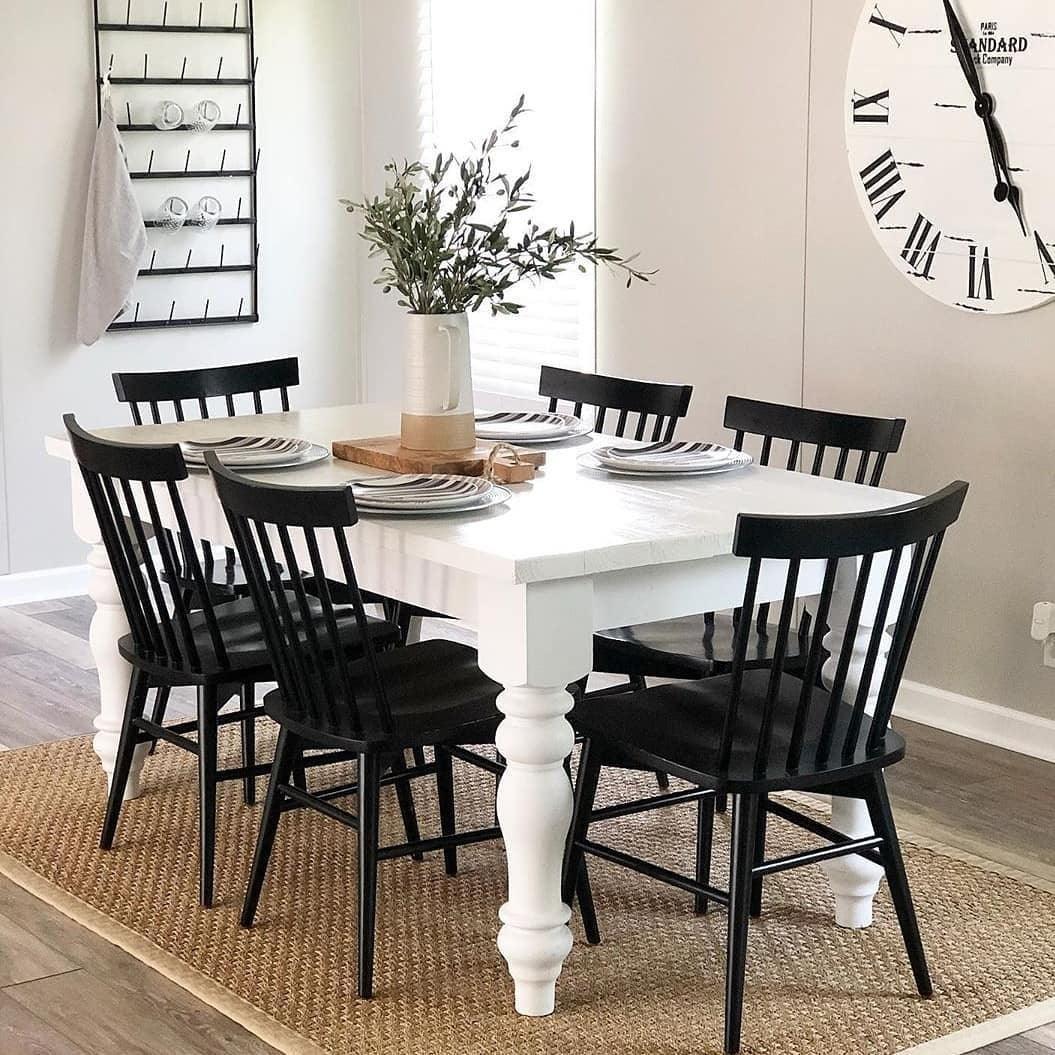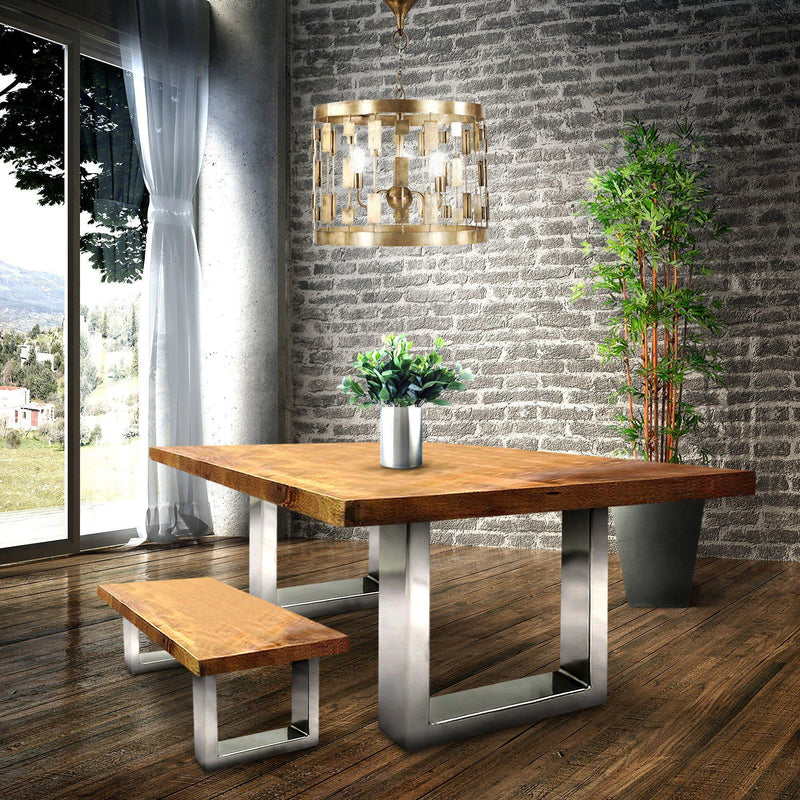Add Charm and Elegance to Your Space with Distinct Dining Room Table Legs
Exactly How to Pick the Perfect Eating Room Table Legs for Your Home Decoration
Choosing the perfect eating area table legs is a nuanced procedure that requires careful consideration of different aspects, including your room restraints, aesthetic preferences, and useful requirements. The interaction in between measurements, products, and styles can substantially affect the setting of your eating location, making it important to approach this choice carefully. As you ponder the myriad alternatives readily available, it comes to be clear that the right selection expands past simple look; it can improve your overall dining experience. What factors should you prioritize to guarantee your option enhances your home's special character?
Assess Your Dining Area
Assessing your eating space is crucial for choosing the right table legs that complement both aesthetics and capability. Begin by measuring the dimensions of your eating area, consisting of ceiling height, flooring area, and closeness to other furnishings. This info will certainly assist establish the proper dimension and height of your table, which directly affects the choice of table legs.
Following, consider the style and format of your dining space. For example, an open-concept layout may benefit from table legs that supply aesthetic lightness, such as slim metal or acrylic alternatives. Conversely, a much more typical setup might call for durable wood legs that give a feeling of permanence.
Evaluate the existing shade scheme and products in your dining area. Harmonizing the table legs with these elements develops a natural appearance that improves the overall decor.
Ultimately, a comprehensive assessment of your eating room will certainly direct you in making an informed decision, making sure that your table legs not only enhance the aesthetic allure however likewise serve sensible functions.
Consider Your Style Preferences
When choosing dining-room table legs, it is necessary to review your individual design preferences, as they significantly affect the general aesthetic of your eating space. Your selection of table legs can either enhance or contrast with existing décor, making it critical to straighten them with your preferred indoor style theme.
If your home leans in the direction of a modern-day visual, think about sleek steel or minimalist wood legs that offer a clean, clean look. For an extra conventional approach, elaborate wooden legs with complex carvings can include a touch of elegance and refinement. Industrial styles profit from robust, basic materials such as reclaimed wood and steel combinations, mirroring a rugged beauty.
Additionally, farmhouse and rustic designs often prefer sturdy, chunky legs that stimulate a sense of warmth and convenience. Conversely, if your decor is eclectic, you may pick unconventional forms or a mix of products to create visual passion.

Evaluate Material Options
The choice of material for dining space table legs plays a crucial duty in both resilience and aesthetic charm. Typical products consist of timber, steel, and composite alternatives, each offering distinctive characteristics that can influence the general look and durability of your table.
Timber is a timeless selection, recognized for its heat and convenience. Woods like oak and walnut give exceptional strength and can be finished in various discolorations to match any kind of style. Nonetheless, softwoods like ache are extra vulnerable to damages and scrapes, making them less ideal for high-traffic locations.
Metal legs, usually crafted from steel or light weight aluminum, exhibit modernity and industrial charm. They are highly long lasting and resistant to use, making them suitable for families with kids or constant events (dining room table legs). In addition, metal can be ended up in different colors, boosting the modification possibilities
Composite products, such as MDF or laminate, offer cost and varied designs. While normally less durable than strong wood or steel, they can still supply a trendy look and are commonly easy to keep.
Eventually, the product you select should straighten with your lifestyle, visual preferences, and the degree of use your table will experience.
Determine Elevation and Size
Choosing the appropriate elevation and dimension for your dining area table is vital for both functionality and comfort. The standard height for eating tables generally varies from 28 to 30 inches, allowing adequate legroom for most people when seated. It is important to consider the dimensions of your dining area and the kinds of chairs you plan to utilize.

In addition, take into consideration the percentages of your dining-room. A larger table in a roomy area can create a grand ambiance, while a smaller table works well in more intimate settings. Ultimately, the best height and size will harmonize with your total decor and boost the eating experience for you and your visitors.
Explore Modification Opportunities

Furthermore, the design of the legs can be tailored to fit different styles, such as rustic, modern-day, or industrial. For instance, conical legs can evoke a mid-century modern-day feel, while beefy, block-style legs may reverberate with standard or farmhouse design.
Homeowners can additionally explore shade finishes, from all-natural wood spots to paint, enabling them to match or comparison with the tabletop and bordering decor.
In addition, leg height can be adapted to accommodate certain seating arrangements or personal choices, enhancing both convenience and functionality.
Finally, one-of-a-kind embellishments, such as makings or decorative brackets, can better personalize the table legs, making the dining experience not simply a declaration but a meal item in the home. By considering these personalization options, home owners can create a dining-room table that absolutely reflects their uniqueness.
Verdict
Selecting the optimal dining-room table legs requires careful consideration of different variables, consisting of the dimensions of the dining space, style choices, product longevity, and desired height. Personalization choices additionally boost the capacity to attain a natural visual that complements the overall decor. By systematically assessing these aspects, house owners can make sure that the picked table legs not just meet functional demands yet additionally contribute favorably he said to the eating experience and setting of the home.
Picking the ideal eating area table legs is a nuanced procedure that calls for mindful factor to consider of different aspects, including your area restrictions, aesthetic preferences, and practical needs.Assessing your eating room is critical for choosing the right table legs that match both looks and performance.When identifying size, gauge the location where the table will be placed to guarantee it fits pleasantly, enabling for at least 36 inches of clearance around the table for easy activity. A larger table in a spacious location can produce a grand ambiance, while a smaller sized table functions well in more intimate setups.Choosing the perfect eating space table legs requires mindful factor to consider of various variables, consisting of the dimensions of the eating space, design preferences, product longevity, and preferred elevation.